Simple Home Repairs: Screened Doors and Windows
Reviewed
Learn to repair or replace damaged screens in wood and metal frames with this step-by-step guide on tools, materials, and techniques.

Hardware Disease of Cattle
Reviewed
Hardware disease of cattle is produced by a sharp object that pierces the stomach wall and gains access to the heart. Visit our site to learn more.

Home Slaughtering and Processing of Beef
Reviewed
A beef animal selected for slaughter should be healthy and in thrifty condition. Visit our site to learn about home slaughtering and processing of beef.
Wheat Silage for Dairy Cattle
Reviewed
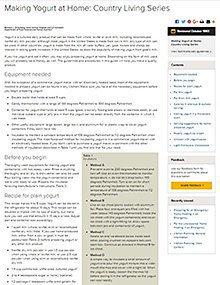
Making Yogurt at Home: Country Living Series
Reviewed
Learn how to make yogurt at home with simple equipment, easy recipes, and tips for achieving the best flavor and texture.
The Bluegrasses
Reviewed
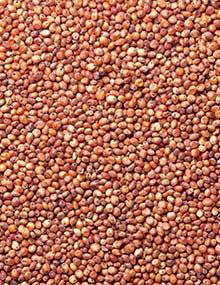
Low-Profile Bins for Grain Drying
Reviewed
Explore how shallow grain bins enhance drying efficiency and reduce energy costs, offering a cost-effective solution for grain storage.
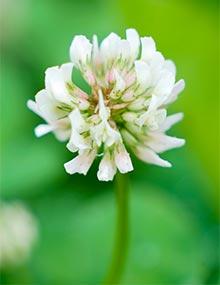
White, Ladino and Sweet Clover
Reviewed
White and ladino clover varieties offer high-quality forage, nitrogen fixation, and adaptability to cool, moist conditions, but require careful grazing management.

Drilled Soybeans in Missouri
Reviewed
Drilled soybeans offer benefits like reduced erosion, faster canopy closure, and improved harvest efficiency, but require careful weed control and uniform stands.
Operating and Maintaining Underground Outlet Terrace Systems
Reviewed
This guide provides essential maintenance practices for underground outlet terrace systems, focusing on inspections, sediment management, and outlet upkeep.
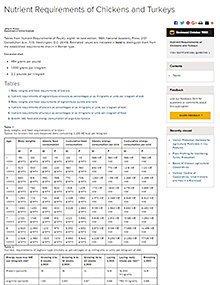
Nutrient Requirements of Chickens and Turkeys
Reviewed
This guide provides nutrient requirements for chickens and turkeys, including body weights, feed intake, and dietary needs by age and production stage.
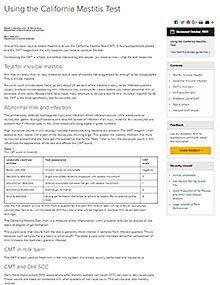
Using the California Mastitis Test
Reviewed
One of the best ways to detect mastitis is by using the California Mastitis Test. Visit our website today to learn more.
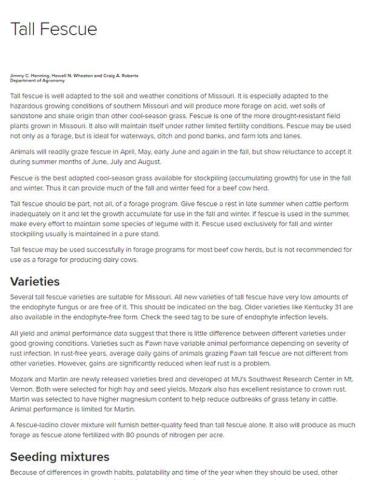
Tall Fescue
Reviewed
Tall Fescue is one of the more drought-resistant field plants grown in Missouri. Visit our website today to learn more.

The Planning Process and People
Reviewed
Renovating Grass Sods With Legumes
Reviewed
Enhance pasture productivity by integrating legumes into grass sods using cost-effective methods that boost forage quality, animal gains, and soil fertility.
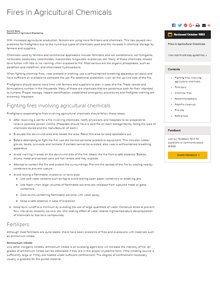
Fires in Agricultural Chemicals
Reviewed
Learn essential safety measures for responding to fires involving agricultural chemicals, including protective gear and firefighting techniques.

Estimating Peak Rates of Runoff From Small Watersheds
Reviewed
Learn to estimate peak runoff rates for small Missouri watersheds using a comprehensive formula and watershed-specific factors.
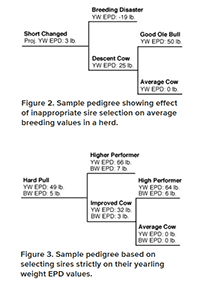
Understanding and Using Sire Summaries: BIF Fact Sheet
Reviewed
Learn how to effectively use sire summaries to make informed breeding decisions, enhancing herd genetics and productivity.

Flock Profiling for Monitoring Turkey Production
Reviewed
Editor’s note
The PDF version of this publication includes illustrations.

Design Criteria for Bottom-Withdrawal (Lake-Cleaning) Spillway
Reviewed
Designing a bottom-withdrawal spillway enhances water quality by removing sediment-laden inflow, extending reservoir life and reducing fish loss.

Radon: An Indoor Health Hazard?
Reviewed
Indoor air can be polluted in a number of ways. Indoor pollutants include formaldehyde, carbon monoxide, respirable dust, nitrogen dioxide, radon and other gases. This guide focuses on just one of these pollutants — radon.
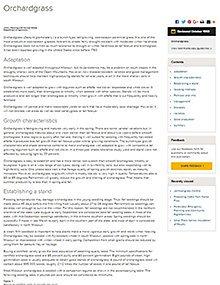
Orchardgrass
Reviewed
Orchardgrass is a cool-season perennial grass well-suited for Missouri, offering early spring growth, shade tolerance, and compatibility with legumes.
Culverts and Flood Gates
Reviewed
Guidance on selecting culvert and flood gate sizes for bottomland drainage up to 640 acres, including flow rate formulas and design considerations.
Missouri Soil Surveys
Reviewed